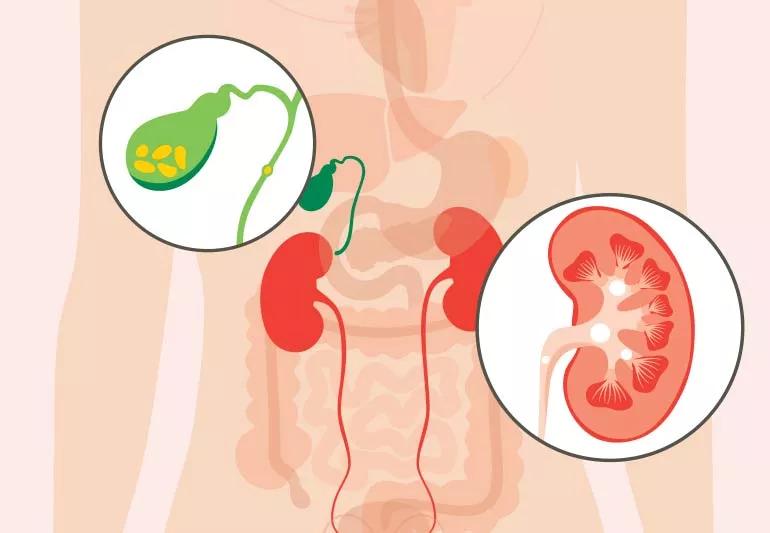Understanding the Secret Distinctions In Between Kidney Stones and Urinary System Tract Infections: A Comprehensive Overview for Clients
Understanding the differences between kidney stones and urinary system system infections (UTIs) is vital for patients that may be experiencing similar symptoms yet encounter significantly different wellness obstacles. As we check out these crucial facets, it ends up being clear that recognizing the unique characteristics of each problem can exceptionally influence client results.
Review of Kidney Stones
The formation of kidney stones, a usually incapacitating and excruciating problem, highlights the important relevance of keeping kidney health. The primary types of kidney stones consist of calcium oxalate, calcium phosphate, uric acid, struvite, and cystine stones, each with distinctive reasons and threat variables.
Several elements add to the development of kidney stones. Dehydration is a substantial danger, as not enough liquid consumption can lead to concentrated urine, advertising crystal development. Nutritional habits, including high sodium and oxalate intake, can intensify the danger. In addition, metabolic disorders and certain clinical problems may predispose people to stone formation.
Signs of kidney stones can consist of serious flank nausea, hematuria, and pain, which typically motivate immediate medical assessment. Treatment options differ, varying from increased fluid intake and dietary alterations to clinical interventions such as lithotripsy or medical removal, relying on the dimension and place of the stones. Comprehending these elements is crucial for reliable prevention and administration.
Introduction of Urinary System Infections
Urinary tract infections (UTIs) represent a typical yet substantial wellness worry, impacting millions of people each year. These infections occur when bacteria get in the urinary system, which includes the kidneys, ureters, bladder, and urethra.
The risk elements for creating a UTI include sex-related activity, specific sorts of contraception, urinary system retention, and a background of previous infections. People with weakened pre-existing problems or immune systems, such as diabetic issues, may also be at better risk. UTIs can be identified into 2 main kinds: complex and straightforward. Straightforward UTIs are usually restricted to the bladder and are more usual in healthy and balanced individuals, while complicated UTIs might involve the kidneys and take place in those with underlying health and wellness problems.
Motivate medical diagnosis and treatment are necessary to protect against difficulties, such as reoccurring infections or kidney damage (Kidney Stones vs UTI). Generally, UTIs are treated with prescription antibiotics, and preventative procedures can be used for those with constant occurrences
Common Signs And Symptoms Contrast
Symptoms of urinary system system infections and kidney stones can frequently overlap, leading to confusion in medical diagnosis. In comparison, kidney stones have a tendency to trigger severe, sharp pain that radiates from the back to the reduced abdominal area and groin, usually defined as colicky discomfort.
Furthermore, UTIs might be accompanied by high temperature and chills, specifically in extra serious instances, while kidney stones can lead to queasiness and throwing up due to extreme discomfort. While discomfort during urination is a characteristic of UTIs, kidney stones commonly present with more severe pain episodes, which may come and go.
Medical Diagnosis Methods
Exactly how can healthcare experts precisely differentiate in between kidney stones and urinary tract infections? The diagnostic process starts with an extensive case history and a comprehensive testimonial of the patient's signs and symptoms. Clinicians often perform a health examination, which might reveal inflammation in the abdominal area or flank region, directing the diagnostic pathway.
Lab examinations play an important duty in distinguishing between these two problems. Kidney Stones vs UTI. A urinalysis can recognize the presence of blood, crystals, or germs, which are a sign of either condition. In situations of urinary system tract infections, the urinalysis might show a significant visibility of leukocyte and nitrites, while kidney stones may offer with details crystals
Imaging studies, such as stomach ultrasound or computed tomography (CT) checks, are important for imagining kidney stones. These imaging techniques enable doctor to assess stone dimension, location, and potential blockages in the urinary system system. On the other hand, urinary system system infections normally do not require imaging unless complications are suspected.
Together, these diagnostic techniques empower medical care professionals to precisely identify and differentiate in between kidney stones and urinary system system infections, ensuring that individuals receive appropriate care and administration.
Treatment Alternatives and Avoidance
While both kidney stones and urinary system tract infections (UTIs) require timely therapy, their monitoring techniques vary significantly.
The treatment for kidney stones usually involves discomfort administration, hydration, and in many cases, medical procedures such as extracorporeal shock wave lithotripsy (ESWL) or ureteroscopy to eliminate or damage down stones. People are frequently recommended to enhance fluid consumption to assist in stone passage and lower recurrence. Dietary look what i found alterations may also be needed, depending upon the stone type.
In comparison, UTIs are largely treated with anti-biotics to get rid of the microbial infection. The certain antibiotic prescribed relies on the bacteria determined and neighborhood resistance patterns. Added steps, such as raised liquid intake and urinary anesthetics, may aid reduce signs and symptoms.
Prevention techniques vary as well; for kidney stones, preserving sufficient hydration and adhering to nutritional limitations can be reliable. For UTIs, preventive techniques include correct hygiene methods, urinating after sexual intercourse, and perhaps preventative anti-biotics for recurrent infections. Comprehending these treatment and avoidance modalities is important for efficient management and to reduce the danger of difficulties related to both problems.
Conclusion

Understanding the distinctions between kidney stones and urinary tract infections (UTIs) is vital for patients that may be experiencing similar signs yet deal with greatly various wellness challenges. The primary kinds of kidney stones consist of calcium oxalate, calcium phosphate, uric acid, struvite, and cystine stones, each with distinct causes and risk variables.
